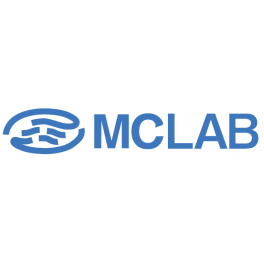 View full size
View full size
- Nucleic Acid Analysis
- Protein Analysis
- Biochemical Reagents
-
Enzymes
- Thermophilic DNA Polymerases
- Mesophilic DNA Polymerases
- Restriction Endonucleases
- Reverse Transcriptase and RNA Polymerases
- DNA/RNA Ligases
- RNases
- Proteases
- Nucleases
- Kinases
- Phosphatases and Sulfurylases
- DNA Repair Proteins
- Single-Stranded DNA Binding Proteins
- Chaperon Proteins and Disulfide Bond Isomerase
- Others
- Gene editing
- Molecular cloning
- Clinical diagnostics
- Human Identification STR kits
- Laboratory instruments
- Software
- A&A Biotechnology
- AdvancedSeq
- BioDynami
- Plant Cell Technology
News
-
XXXV. Izakovičov memoriál 2025
We are pleased to announce our participation in the prestigious XXXV. Izakovič Memorial 2025, which will take place on October 8–10, 2025 at the Grandhotel Praha, Tatranská Lomnica. The Izakovič Memo...
Read more -
1st Czechoslovak Congress of Medical Genetics 2025
In the spring, we will participate in the 1st Czechoslovak Congress of Medical Genetics, which will take place from April 2–4, 2025, at the Cultural and Congress Center Elektra in the spa town of Luha...
Read more -
RANK 2025
Visit us at the 19th edition of the RANK 2025 conference, which will take place on March 19th and 20th at the Zlatá Štika Hotel in Pardubice. The conference is organized by the Czech Society of Clinic...
Read more
 View full size
View full size
Description
Neurotrophin-4 (NT-4), also known as NT-5, is a member of the NGF family of neuronal and epithelial growth factors. Neurotrophins have six conserved cysteine residues that are involved in the formation of three disulfide bonds. The mature protein is secreted as a homodimer and can also form heterodimers with BDNF or NT-3. NT-4 binds and induces receptor dimerization and activation of TrkB. NT-4 promotes the development and survival of selected peripheral and CNS neurons. BDNF, which also activates TrkB, overlaps with many but not all NT-4 functions, a distinction that is likely due to differences in expression patterns. NT-4 induced TrkB signaling augments NMDA receptor activity and increases neuronal sensitivity to excitotoxic cell death. It also promotes the proliferation of keratinocytes and accelerates hair follicle regression during the follicular cycle. NT-4 is secreted by activated T cells and granulocytes at sites of inflammation where it contributes to tissue regeneration.
Full Name
Human Neurotrophins-4/5
Source
E. coli
Species
Human
Accession #
NM_006179.4
Molecule Weight
NT-4 recombinant protein is a noncovalent linked homodimer. The 130 amino acid recombinant protein has a predicted molecular mass of approximately 14 kD as monomer, 28 kD as dimer.
Purity
> 95 % as determined by SDS-PAGE
Endotoxin
< 1.0 EU per μg of the protein as determined by the LAL method
Activity
The ED50 as determined by the dose-dependent induction of choline acetyl transferase activity in rat basal forebrain primary septal cell cultures was found in the range of 20-50 ng/ml, corresponding to a specific activity of 2-5 x 104 units/mg.
Storage
-80 °C, avoid repeated freeze-thaw cycles.
Storage Buffer
PBS
Cart
Payment gate



